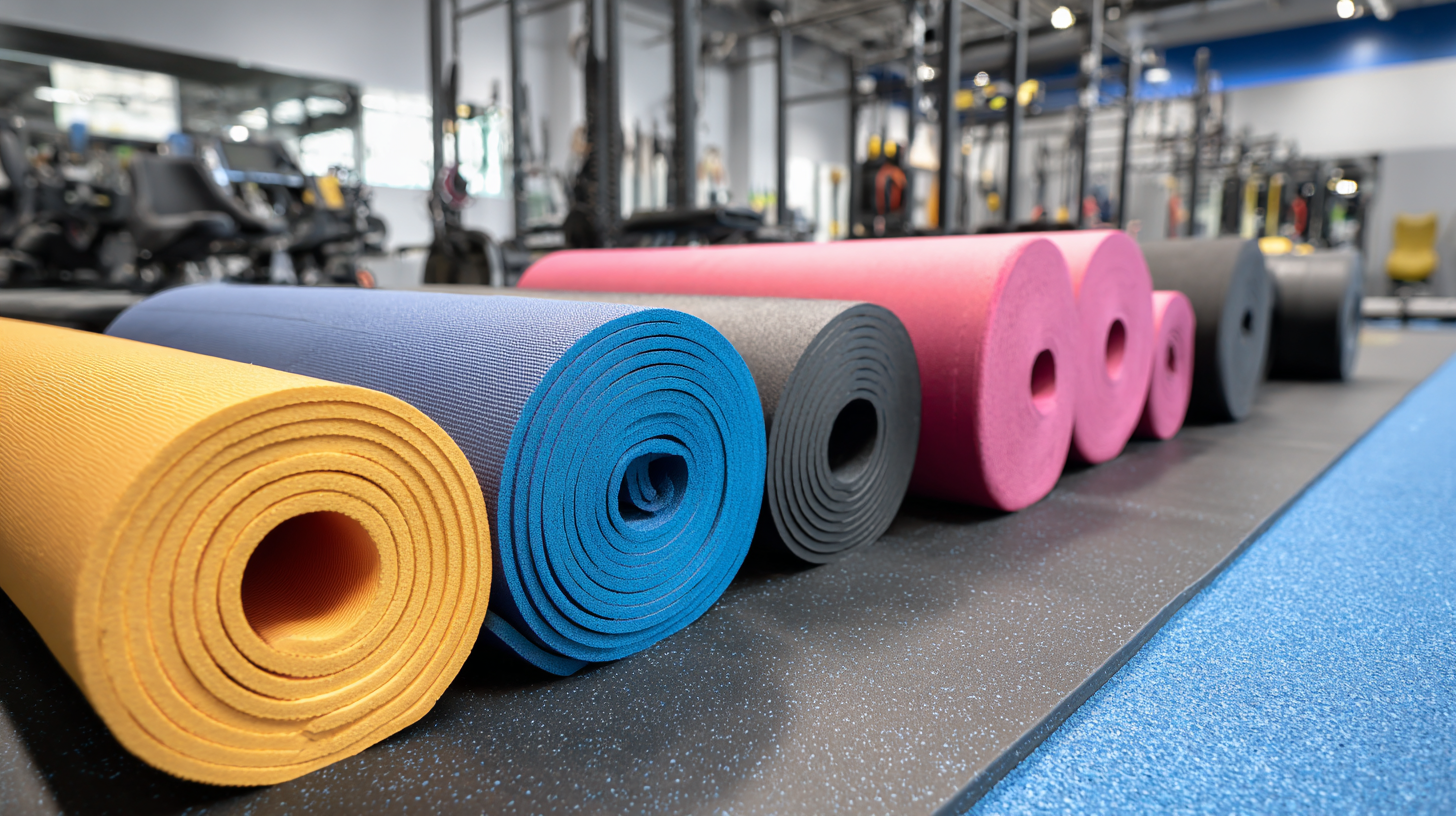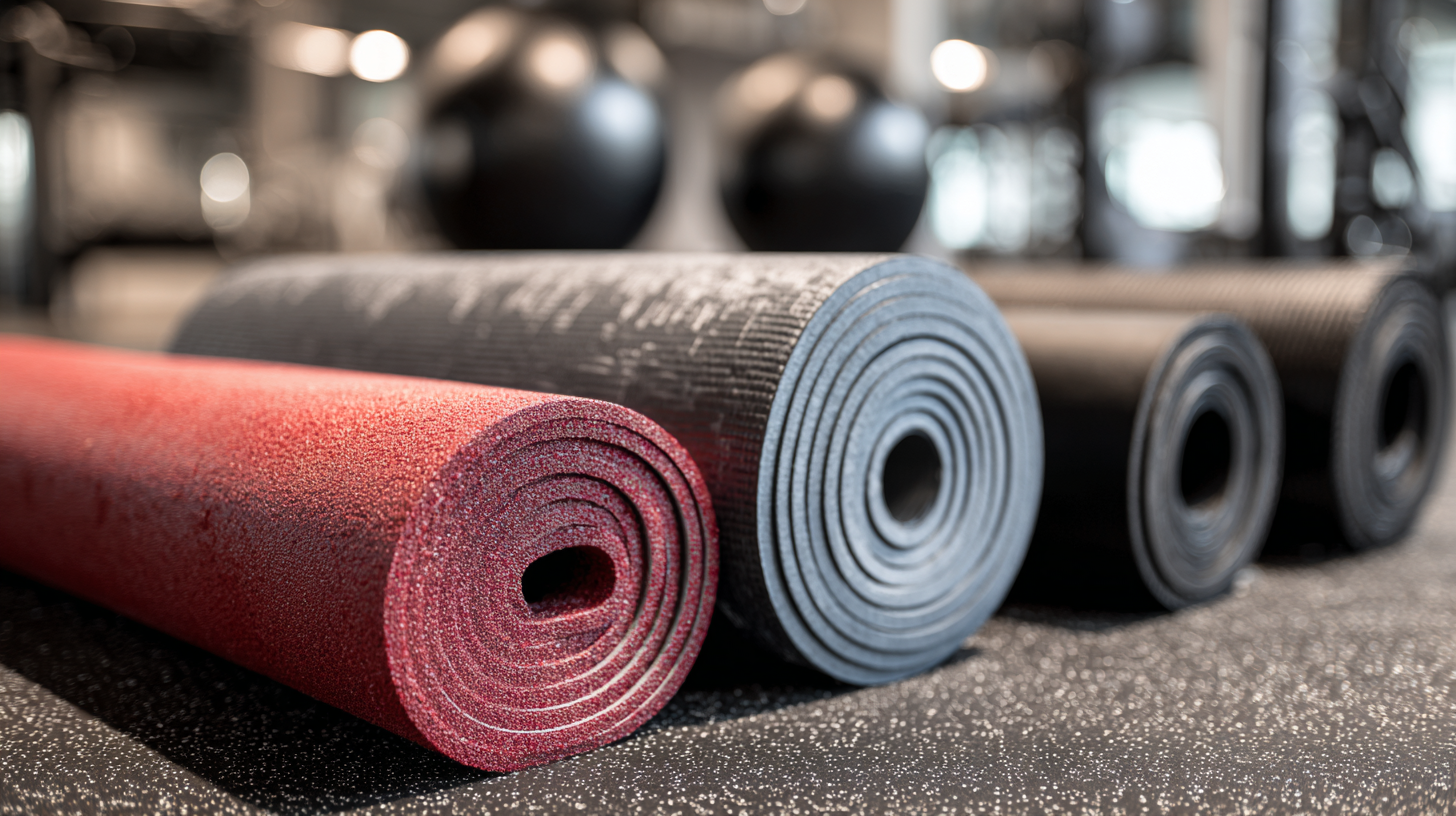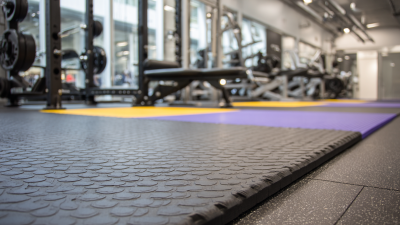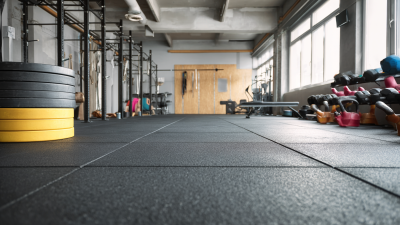The Ultimate Guide to Choosing Gym Flooring Rolls for High Impact Durability and Slip Resistance
When it comes to optimizing workout environments, selecting the right gym flooring rolls is crucial for ensuring high impact durability and slip resistance. According to a report by IBISWorld, the fitness center industry has seen a growth of over 3% annually, underscoring the increasing focus on quality equipment and facilities.

Gym flooring rolls are engineered to absorb shock and reduce the risk of injury, making them an essential component for high-traffic areas within fitness spaces. Research indicates that proper flooring can decrease slip and fall incidents by 25%, highlighting the importance of investing in specialized materials.
As gym owners and fitness enthusiasts seek to enhance their workout experience, a thorough understanding of the types of flooring available will lead to better choices that not only support athletic performance but also ensure safety and longevity.
Understanding the Importance of Gym Flooring in High-Impact Areas
When designing a gym, especially in high-impact areas such as weightlifting zones or group fitness studios, selecting the right flooring plays a crucial role in ensuring safety and enhancing performance. Research from the Rubber Manufacturers Association indicates that high-impact activities can result in an increased risk of injuries, making it essential to invest in flooring that provides substantial impact absorption and slip resistance. Advanced flooring materials, such as rubber rolls, are specifically engineered to withstand the rigors of intense workouts while providing a stable, anti-slip surface that reduces the likelihood of accidents.
Moreover, studies show that over 70% of gym injuries are related to falls or slips, underlining the importance of choosing appropriate flooring. The right gym flooring should not only protect against injuries but also enhance the overall gym experience by improving traction and comfort. In this context, gym flooring rolls offer a seamless and durable solution that caters to the demands of high-intensity workouts while maintaining optimal hygiene and easy maintenance, ultimately contributing to a safer and more efficient training environment.
Essential Features of Durable Gym Flooring Rolls
When selecting gym flooring rolls, durability and slip resistance are critical factors to consider. According to industry reports, high-impact flooring solutions, such as rubber and vinyl, are preferred due to their ability to withstand rigorous activities. For instance, a 2021 study from the Flooring Industry Association indicates that rubber flooring can absorb up to 90% of impact energy, making it ideal for weightlifting and high-intensity workouts. This high durability ensures the flooring maintains its integrity over time, reducing the need for costly replacements.

Another essential feature is slip resistance, which is key to ensuring safety during workouts. The American Society for Testing and Materials (ASTM) recommends a Static Coefficient of Friction (SCOF) value of at least 0.5 for safe gym environments. Many gym flooring rolls now come with textured surfaces that enhance grip, particularly when moisture is present. In a recent survey, over 75% of gym owners reported that investing in high-quality, slip-resistant flooring reduced the frequency of accidents and improved overall member satisfaction. Prioritizing these features not only creates a safer environment but also contributes to a more enjoyable workout experience.
Evaluating Slip Resistance for Safety in Fitness Spaces
When selecting gym flooring rolls, evaluating slip resistance is crucial for ensuring safety in fitness spaces. According to the National Center for Biotechnology Information, slip-related injuries account for nearly one-third of all gym accidents. Therefore, choosing flooring with a high coefficient of friction is essential to minimize these risks. Materials like rubber and vinyl exhibit superior slip resistance, making them ideal for high-impact areas where athletes or gym-goers are most active.

Tips for enhancing safety include opting for flooring that meets industry standards, such as the ASTM D2047 for slip resistance testing. Additionally, consider surface textures; textured finishes can provide better grip and help prevent slips during workouts, especially in areas prone to sweat accumulation.
Incorporating maintenance routines, such as regular cleaning with non-slip surfaces, can significantly improve the longevity and safety of your flooring. Regular assessments of wear and tear will reveal when it's time for replacements or upgrades, ensuring that your gym floor remains safe and slip-resistant over time. Prioritizing slip resistance not only protects users but also fosters a culture of safety and wellness in your fitness environment.
Comparative Analysis of Materials for Gym Flooring Durability
When selecting gym flooring, durability and slip resistance are paramount, particularly for high-impact environments such as fitness studios and weightlifting areas. A comparative analysis of various materials reveals significant differences in performance characteristics. According to a report by the International Health, Racquet & Sportsclub Association (IHRSA), rubber flooring remains a top choice due to its excellent shock absorption and resistance to wear and tear. Research indicates that rubber can endure impact forces up to 1000 PSI, making it suitable for rigorous training exercises.
In contrast, foam flooring offers a softer surface which is favored for activities like yoga and pilates. However, its durability under heavy loads is lower, with studies suggesting it can compress significantly over time, leading to potential instability. Additionally, vinyl flooring emerges as a competitive option, especially when moisture resistance is a priority. The 2021 Fitness Flooring Report highlights that vinyl can provide effective slip resistance, although it may not withstand high-impact use as well as rubber. By understanding these material properties, gym owners can make informed decisions that align with their specific needs for performance and safety.
The Ultimate Guide to Choosing Gym Flooring Rolls for High Impact Durability and Slip Resistance
| Material Type | Durability Rating (1-5) | Slip Resistance Rating (1-5) | Noise Reduction (decibels) | Price per Square Foot (USD) |
|---|---|---|---|---|
| Rubber | 5 | 4 | 24 | 2.50 |
| Foam | 3 | 3 | 20 | 1.50 |
| Carpet Tiles | 4 | 5 | 18 | 3.00 |
| Vinyl | 4 | 4 | 22 | 2.00 |
| Cork | 3 | 4 | 16 | 2.75 |
Maintenance Tips to Extend the Lifespan of Your Gym Flooring
Maintaining gym flooring is crucial to ensure its longevity and performance, particularly under high-impact activities. Regular cleaning is the cornerstone of proper maintenance. Use a mild detergent mixed with water to wipe down the surface after every workout session. This not only removes sweat and dirt but also helps prevent the buildup of grime that can degrade the flooring over time. Additionally, avoid using harsh chemicals or abrasive cleaners, as they can damage the surface and reduce slip resistance.
Another important aspect of maintenance is consistent inspection for signs of wear and tear. Look for any cracks, dents, or loose edges that could compromise the integrity of the flooring. Addressing minor issues promptly can prevent more significant damage in the future. Always ensure that the flooring is kept dry, as moisture can lead to slips and long-term damage. Lastly, regularly applying a protective sealant designed for gym flooring can provide an extra layer of durability, enhancing both the appearance and lifespan of your gym surface.
The Impact of Different Gym Flooring Materials on Durability and Slip Resistance
Related Posts
-

Understanding the Benefits of Various Types of Gym Floor Mats for Optimal Performance
-

7 Essential Reasons to Choose the Best Rubber Gym Flooring for Your Fitness Facility
-

Creative Uses of Rubber Gym Flooring: Inspiring Examples for Modern Fitness Spaces
-

7 Essential Tips for Choosing the Best Gym Floor Mats for Your Fitness Space
-

How to Choose Interlocking Floor Mats for Maximum Durability and Comfort in Your Space
-

How to Choose the Best Rubber Gym Flooring for Your Fitness Space
